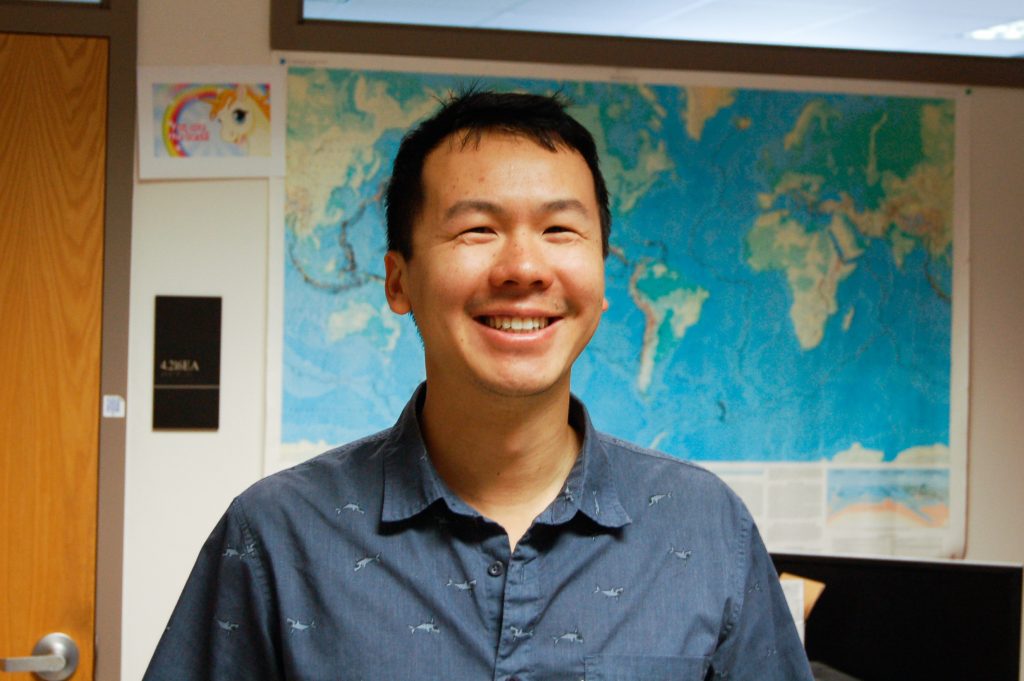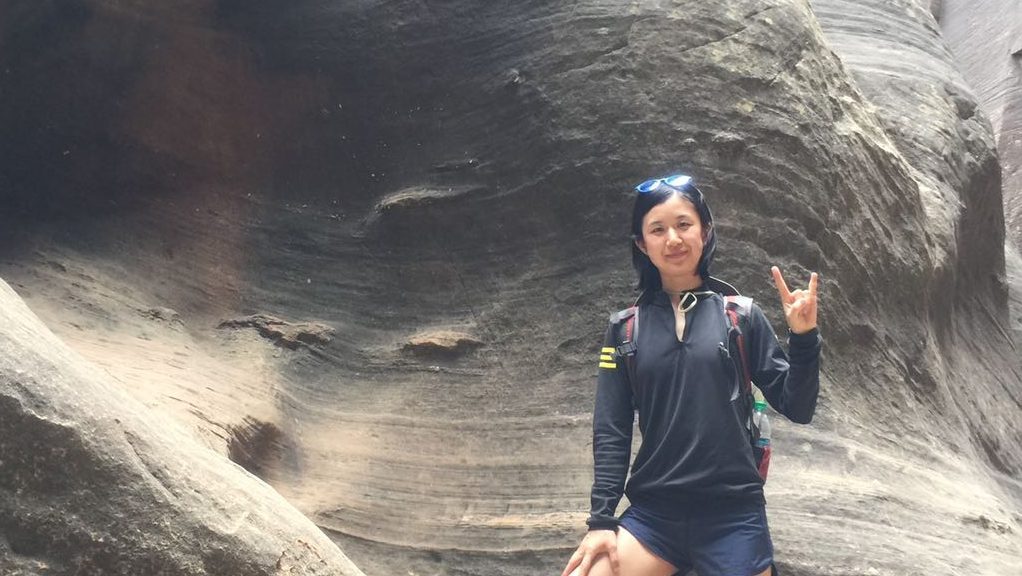In March this year, students from the University of Texas Jackson School of Geosciences presented research at the annual meeting of the UT-Austin EDGER Forum, an industry consortium that sponsors education and research in exploration geophysics. Research carried out by the group spans laboratory experiments, numerical simulations and field data analysis, a combination that is virtually unheard of among geophysics consortia and frequently leads to applications in industry.
We met with students from each of the consortium’s three research tracks: numerical simulations, theoretical rock physics and laboratory experiments. In this part, we talked to students working with Dr. Kyle Spikes’ theoretical rock physics research group. EDGER Forum Co-Investigator, Kyle Spikes, is a professor at the Department of Geological Sciences and the Peter T. Flawn Centennial Chair in Geology.
DAVID TANG
David Tang decided to become a geophysicist because it allowed him to work with computers and math while also spending a lot of time outdoors. After graduating from Berkeley, David began a PhD with Kyle Spikes at the UT Jackson School of Geosciences.
“UT’s kind of the best of both worlds” says David, “a lot of schools are only good with academia or only do industry, but UT gives you a nice combination of both.”
This is especially true of partnerships such as EDGER Forum where students benefit not just from connections with industry, but the opportunity to bolster their research using high quality, industry sourced data. “EDGER Forum is a good opportunity for me because it’s given me access to datasets that would cost millions of dollars to collect,” explains David.
Now in his fifth year, David is researching how to teach computers to identify rock properties from thin sections, a typically laborious and time-consuming task for humans. “Thin sections are basically pictures of a thinly cut rock under a microscope,” explains David. “By looking at these images you can get an idea of the grain distribution inside the rock which tells you properties about the rock and where it came from.”

David explains that currently, if geologists want to know about the properties of rocks taken from a core sample, for example, they have to spend a long time looking at it and visually cataloguing information about it. “We’re trying to automate this process with machine learning. For example, we can give a computer some examples of what quartz looks like. It uses these examples to learn how to decide how to mathematically quantify quartz in a picture.”
This allows scientists to effectively digitize rock samples and run experiments on them without destroying the original sample, saving both time and money.
WEI XIE
When Wei Xie talks about research she describes how knowledge travels across disciplines. “It’s like a circle,” she says, “I borrow something from a discipline like biology or computer science, develop it and then lend it back again. I think this can be a really beneficial circle for everyone.”
This ‘circle’ supplied Wei Xie with the inspiration and theoretical framework to develop a new machine learning algorithm that recognizes useful features in geological and petrophysical data. Although still in early development, her work draws on methods used in facial and pattern recognition technology and will be used by industry scientists to group well log data in reservoirs studies.
Another important part of her research deals with ‘uncertainty’ in reservoirs. Oil and gas reservoirs are typically found sandwiched between various layers of rock, sand, shale, salt and other sediments. Predicting what’s down there is crucial not just for finding the right stuff, but for extracting it safely.
“We’ve seen a lot of examples where uncertainty in a reservoir has proved very important,” says Wei, “such as the Macondo well in the Gulf of Mexico in 2010.” The Deepwater Horizon disaster killed 11 people and spewed oil for three months. Recent research at UT has shown how difficult geologic conditions made drilling difficult and contributed to the engineering decisions and mistakes that led to the blowout and subsequent environmental catastrophe. Understanding the geologic conditions of reservoirs and reducing uncertainty is essential in preventing similar disasters.

“I analyze what we call facies,” explains Wei, “which is any underground layer of rock or rock material. You have different groups such as oil sand, brine sand and shale. My job is to let you know how likely it is that when you drill at a specific point that you will find oil sand and that it’s not going to be shale or brine sand.”
Wei uses a combination of seismic information and well log data to create a broad picture about the geological ‘neighborhood’ around a potential reservoir. This helps industry scientists decide where and how to drill and what sort of geologic conditions to expect.
Consortia such as the UT EDGER Forum help scientists like Wei develop and refine their research. “It’s really important to discuss what you are doing with people who have an industry scope,” she says. “These are people who can make suggestions or ask questions that really make you think about how to turn your theoretical work into something useful, something that can be applied in industry.” Such consortia are also a great place for students to present their work and network with industry experts. “We are very fortunate here at UT.”
Wei comes from China and studied geophysics at the University of Petroleum in Beijing. The climate in both Beijing and Alberta, Canada, where she completed her master’s and worked for several years, is very different to your typical Texas summer.
“I like hiking. When I was in Calgary I went hiking every weekend. But Texas is so hot!”
Still, Wei has learned that Texans, and especially Austinites have their own ways to cool off and she’s become a regular visitor to Barton Creek, one of her favorite spots in the city.
“Texas is definitely great, and especially Austin I feel is really a young, dynamic and active place. I’m not sure whether it’s because of the culture or the people, but it’s a really great place, like nowhere else.”


